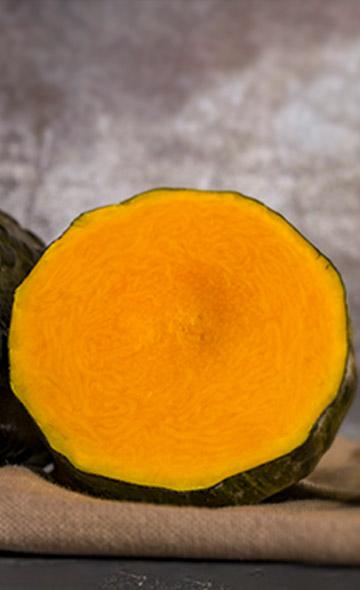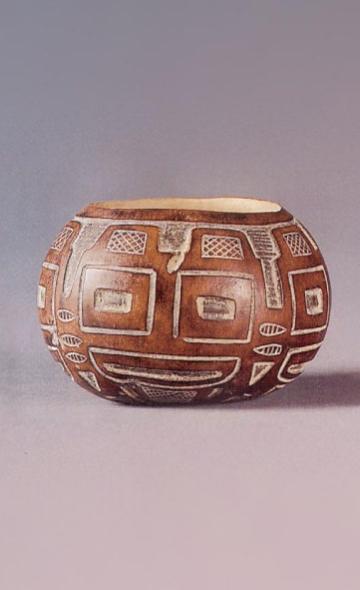- Visitors
- Researchers
- Students
- Community
- Information for the tourist
- Hours and fees
- How to get?
- Virtual tours
- Classic route
- Mystical route
- Specialized route
- Site museum
- Know the town
- Cultural Spaces
- Cao Museum
- Huaca Cao Viejo
- Huaca Prieta
- Huaca Cortada
- Ceremonial Well
- Walls
- Play at home
- Puzzle
- Trivia
- Memorize
- Crosswords
- Alphabet soup
- Crafts
- Pac-Man Moche
- Workshops and Inventory
- Micro-workshops
- Collections inventory
- News
- Researchers
- Series on Andean Food: The Zapallo Loche (Cucurbita Squash)
News
CategoriesSelect the category you want to see:

International academic cooperation between the Wiese Foundation and Universidad Federal de Mato Grosso do Sul ...

Clothing at El Brujo: footwear ...
To receive new news.
Por: José Ismael Alva Ch. y Leslie Zúñiga Becerra
By José Ismael Alva Ch. And Leslie Zúñiga Becerra
The squash is a fruit that belongs to the plants with a creeping or climbing stem. Among all the varieties of squash, the Loche (Cucurbita moschata duchesne) is the native fruit with the highest consumption since ancient times in America. In the following lines we will learn about part of the history of this squash, its roots in the gastronomic customs of the Peruvian north coast and its nutritional and medicinal properties.
The loche squash in history
In the Andes, northern Peru has the oldest remains of the loche squash. At the archaeological site of Nanchoc, upper Zaña valley (Lambayeque region), samples of this fruit date back 10 000 years (8000 BC). In the Huaca Prieta and the Paredones sector, located in the El Brujo Archaeological Complex, Chicama Valley (La Libertad region), the evidence of the loche squash is 5 300 years old [1] [2]. Thus, from the end of the Lithic period (15,000 - 7600 BC) and the beginning of the Archaic period (7600 – 1700 BC), the loche squash was integrated into the diet of the ancient Peruvians.
In our territory there are several native species of squash. However, we currently do not have precise botanical identifications on the particular consumption of each of these species in archaeological contexts, nor on their distribution in the Andes. However, it is notable that this fruit, particularly loche, occupied a prominent position in the diet.
Proof of this lies in the fact that, on the north coast, the Moche (100-800 AD) and the Chimú (1200-1532 AD) frequently represented the loche squash through pottery. The artisans of these societies paid particular attention and reproduced in clay the characteristic longitudinal ridges and warts of this fruit [3] [4].
In the colonial period, squashes were incorporated into the diet of the Spanish and the African slaves who were brought to America [5]. In the XVII century, the cultivation of squash was distributed in the valleys of the coast [6], as species such as loche can be commonly sown from the altitude level of the sea. Although there is no consensus on the maximum altitude for its cultivation, most of the contemporary agricultural activity of loche squash is concentrated in the ecological zone of La Chala (0-500 meters above sea level).
"The squash serve as sustenance to the Indians, Blacks and Spaniards, sometimes roasted with oil and vinegar, others cooked in stews, and in various forms of preserves that are made from them ...", Bernabé Cobo, 1653.
The loche squash of current-day Lambayeque
In 2009, after evaluating the historical significance of this plant, the National Competition and Intellectual Property Protection Institute (INDECOPI) officialized the squash as one of the native agricultural products of the Lambayeque region, in the north coast of Peru [7].
By the year 2012, the main districts producing loche squash in Lambayeque were: Mesones Muro and Pitipo, in the province of Ferreñafe; Túcume Illimo and Mórrope, in the province of Lambayeque; and, finally, Monsefú, Etén and Reque, in the province of Chiclayo [7].
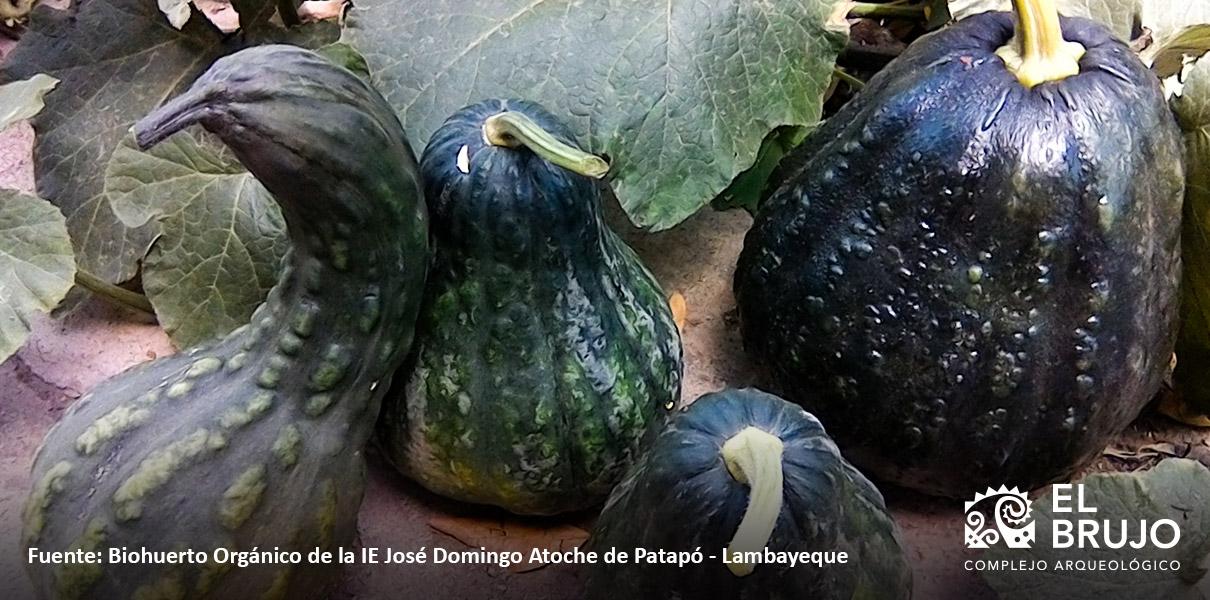
Ingrained customs
In the sowing of the loche, the processes and the sowing times from previous decades or centuries are maintained. Sowing is done in the winter months, as it is less productive in the summer months. In addition, it is advisable to sow the loche by planting twigs instead of seeds, due to the low quality of the latter [8].
Some of the customs of the locheros (the farmers who cultivate this specimen) are still maintained today. One of them is to forbid a woman during her menstruation period to cross a field of loche during the growth process, under the belief and fear that this fruit will dry out. The opposite happens when the woman is pregnant, as the harvest will be abundant. Another custom that the locheros keep is to carry the boiled loche, the boiled gourd, the chili pepper and the salted mackerel in a backpack [8].
Strong in flavor and aroma
The loche squash has two varieties: the pear-like one (it has seeds inside) and the cylindrical one (it has no seeds, but its aroma and flavor are stronger). In Peruvian gastronomy it can be the main ingredient or an accompaniment because it is small, solid and aromatic; it is also versatile and you can make salty and sweet preparations. With this squash, the thickened soup, or Yémeque, is prepared, a northern dish based on loche, caigua, zarandaja and corn, adding at the end the fish (mackerel or pejerrey), creating a thick white soup that the ancient Muchic supposedly consumed [8 ].
The main dishes that include the loche squash are the seco de cabrito, the beans, the locro, the white aguadito, the loche bread, the manjarblanco de loche, the sweet rice with loche, the thickened soup or Yémeque, the rice with duck, rice with baby goat, among others.
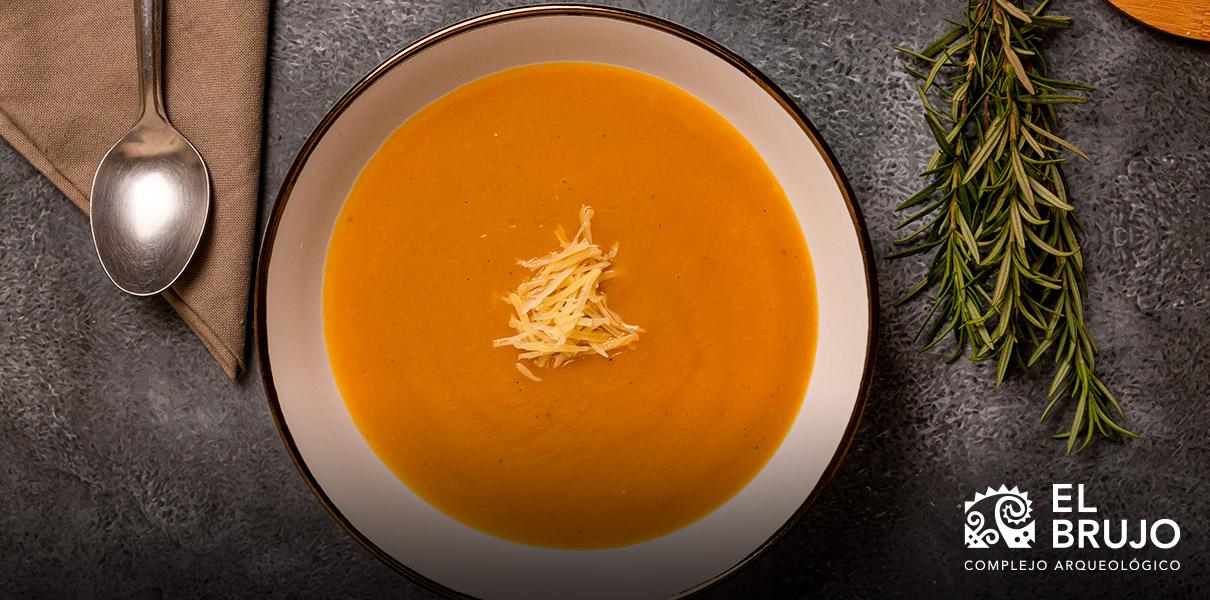
Medicinal and nutritional properties
The squash is easy to digest and contains mucilage, a plant substance that protects the stomach lining, ideal for people with heartburn or digestive problems. It is a low sodium food and is beneficial for lowering blood cholesterol. Its seeds are a source of magnesium, which contributes to the good health of the cardiovascular system, it also provides useful minerals for the cardiovascular system, such as iron.
It is diuretic, due to its high water content, being useful in kidney problems. It also helps to prevent the formation of stones in these organs and reduces fluid retention. It has anti-inflammatory effects and is good for diabetics, as it has few calories, sugars and carbohydrates.
It contributes to good digestion and to weight loss, due to its satiating effect caused by its high fiber and water content. The squash increases the energy level, since it has a large amount of potassium, becoming an effective alternative to recover energy.
The beta-carotene and the antioxidants that it contains are very useful in preventing different types of cancer. These are beneficial in regenerative processes and allow cells to take longer to age due to oxidation. Finally, the seeds of this vegetable contain tryptophan, which helps to better regulate mood and sleep; this component is necessary for the generation of various neurotransmitters. Furthermore, the squash helps the body to generate hormones, allowing it to relax and reduce stress [9].
Nutritional table of the loche squash
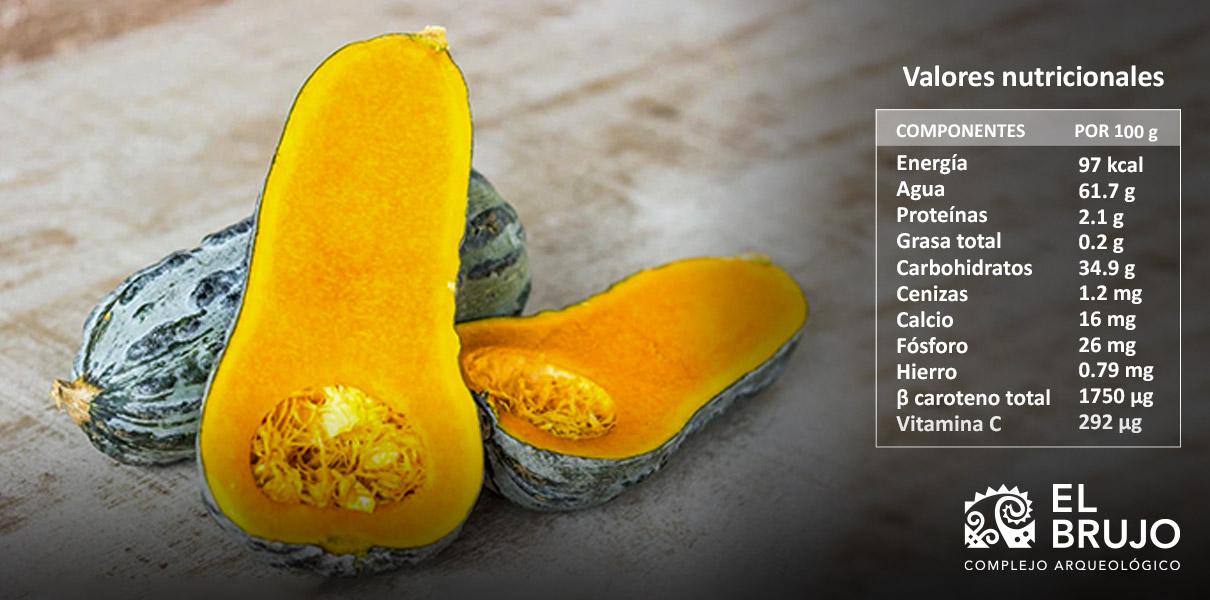
Sources
[1] Bonavia, D., V. Vásquez, T. Rosales, T, Dillehay, P. Netherly, P. and K. Benson. (2017). Plant Remains. Where the Land Meet the Sea. Fourteen Millennia of Human History at Huaca Prieta, Peru. T. Dillehay (Ed.), Pp. 367-433. Austin: University of Texas.
[2] Dillehay, T. (2016). Social Complexity, Sedentism and Food Production in Northern Peru: 10,000-4,000 BP. The Origins of Food Production. N. Sanz (Ed.), Pp. 200-209. Mexico City: UNESCO.
[3] León, J. (2000). The botany of tropical crops. San José: Inter-American Institute for Cooperation on Agriculture.
[4] Fernández, A and E. Rodríguez. (2007). Ethnobotany of Pre-Hispanic Peru. Trujillo: Herbarium Truxillense.
[5] Cobo, B. (1964 [1653]). History of the New World. First part. Library of Spanish Authors Volume XCI. Madrid: Atlas editions.
[6] Vázquez de Espinosa. (1948 [1630]). Compendium and Description of the West Indies. Washington: Smithsonian Institution.
[7] Caritas of Peru. (2012). Loche from Lambayeque. Cultivation Manual. Lima: Cáritas del Perú.
[8] Zaharia Soria, M. (2019). Loche and traditional cuisine as a regional tourist product of Lambayeque, 2017. Thesis to choose the academic degree of master in tourism and hotel marketing. Universidad de San Martín de Porres, Lima.
[9] Castel, F. (s.f.). The 11 benefits of squash for your health [Informative note]. Psychology and mind. https://psicologiaymente.com/nutricion/beneficios-del-zapallo
[10] Reyes García, M., Gómez-Sánchez Prieto, I., & Espinoza Barrientos, C. (2017). Peruvian food composition tables. Lima: Ministry of Health, Institute of Health.
Researchers , outstanding news


